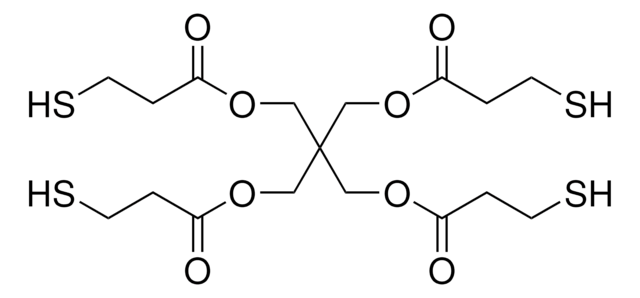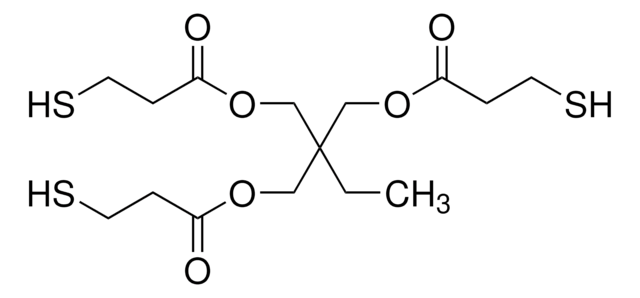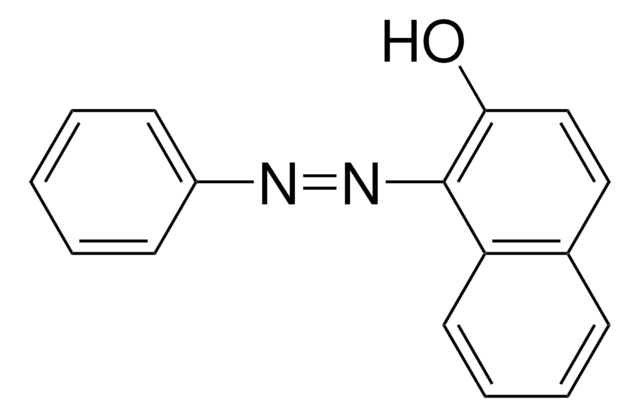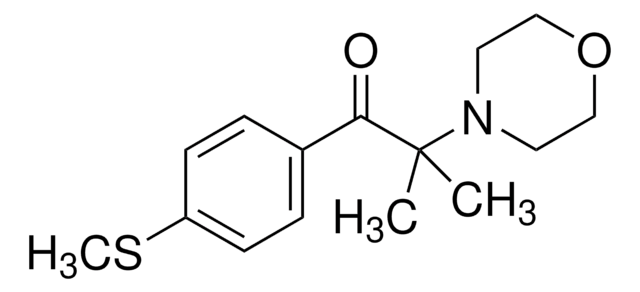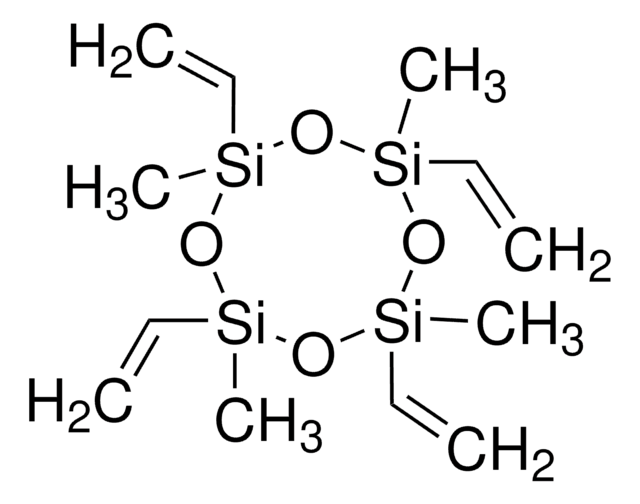511447
Phenylbis(2,4,6-trimethylbenzoyl)phosphine oxide
97%, powder
Sinonimo/i:
BAPOs, Bisacylphosphine oxides
About This Item
Prodotti consigliati
Saggio
97%
Stato
powder
powder, crystals or chunks
Punto di fusione
131-135 °C (lit.)
Solubilità
acetone, acetonitrile, toluene, and hexanediol diacrylate: soluble
Stringa SMILE
Cc1cc(C)c(c(C)c1)C(=O)P(=O)(C(=O)c2c(C)cc(C)cc2C)c3ccccc3
InChI
1S/C26H27O3P/c1-16-12-18(3)23(19(4)13-16)25(27)30(29,22-10-8-7-9-11-22)26(28)24-20(5)14-17(2)15-21(24)6/h7-15H,1-6H3
GUCYFKSBFREPBC-UHFFFAOYSA-N
Cerchi prodotti simili? Visita Guida al confronto tra prodotti
Descrizione generale
Applicazioni
- Radical polymerization of dental resins. BAPO enhances the polymerization rate and conversion compared to other initiators.
- Preparation of divinylbenzene modified polymer-based ceramic materials for high temperature sensor applications.
Avvertenze
Warning
Indicazioni di pericolo
Consigli di prudenza
Classi di pericolo
Aquatic Chronic 4 - Skin Sens. 1
Codice della classe di stoccaggio
11 - Combustible Solids
Classe di pericolosità dell'acqua (WGK)
WGK 1
Dispositivi di protezione individuale
dust mask type N95 (US), Eyeshields, Faceshields, Gloves
Scegli una delle versioni più recenti:
Possiedi già questo prodotto?
I documenti relativi ai prodotti acquistati recentemente sono disponibili nell’Archivio dei documenti.
I clienti hanno visto anche
Articoli
The manufacture of monomers for use in ophthalmic applications is driven by the need for higher purity, improved reliability of manufacturing supply, but ultimately by the need for the increased comfort, convenience, and safety of contact lens wearers. Daily wear contact lenses have the potential to fill this need for many customers; however, their widespread use is constrained by higher costs compared to weekly- or monthly-based lenses. New approaches that improve cost structure and result in higher quality raw materials are needed to help make contact lenses more affordable and accelerate growth of the contact lens market.
Il team dei nostri ricercatori vanta grande esperienza in tutte le aree della ricerca quali Life Science, scienza dei materiali, sintesi chimica, cromatografia, discipline analitiche, ecc..
Contatta l'Assistenza Tecnica.
